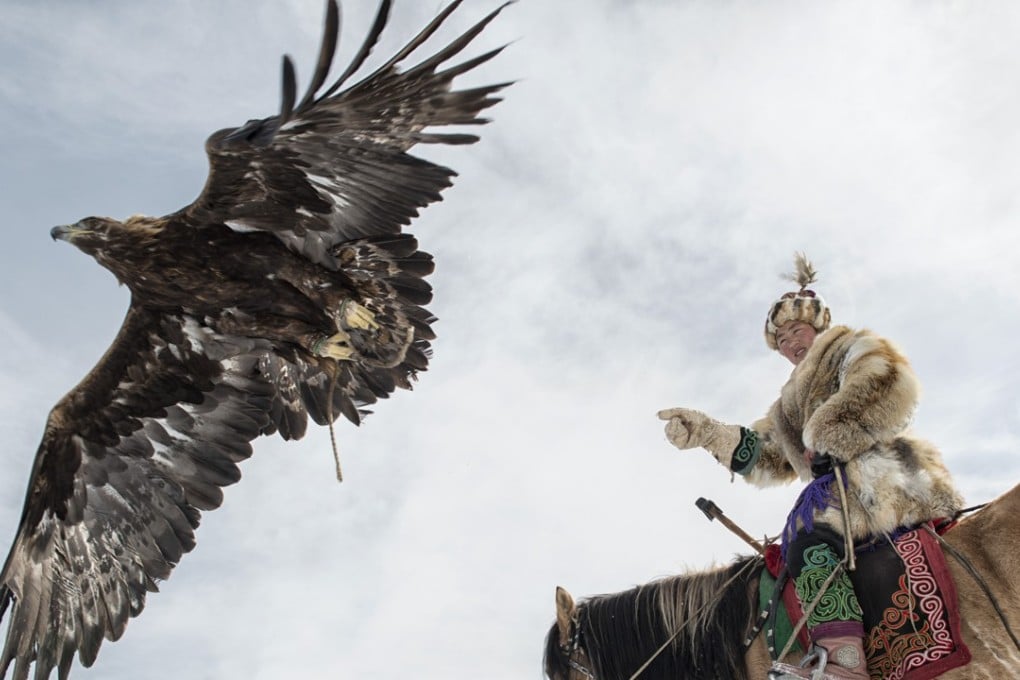Eagle huntresses challenge the patriarchy in Mongolia
- Aisholpan Nurgaiv, the first female to enter – and win – the world’s top contest for eagle hunters, has inspired other young ethnic Kazakh women to venture into an arena long dominated by men, not all of whom welcome their new rivals

On her way to school, Aigerim Asker looks like the Kazakh girl next door. Dressed in jeans and a matching blue jacket, with her hair in two neat braids fashioned by her mother, she rides 12km through the mountains on horseback or motorbike to reach Altai, a town in western Mongolia’s Bayan-Ölgii province.
At 13, she often replies to questions with a shy smile. When she speaks, she does so in an almost inaudible whisper, frequently looking for an approving nod from her father. But Aigerim is no timid, mollycoddled child. She is one of the few remaining Kazakh eagle hunters, who are known locally as burkitshi.
“Both my father and my uncle have carried on the tradition of eagle hunting, so I’ve always been around golden eagles. But it wasn’t until four years ago that I started to develop a special relationship with one of the eagles and acquired an interest in falconry,” she says.
Home for Aigerim are the two gers (circular tents used by nomadic Mongolians) she shares with her extended family. Like most nomadic people here, the family uproots three or four times a year in search of better pastures for their 700-strong herd of sheep and goats.
“I’ve always been a bit of a tomboy and enjoy working in the field or accompanying my father with the animals,” Aigerim says.

As she arrives for classes, her schoolmates greet her warmly, knowing she will soon be facing a stern test. Aigerim’s teacher, a short, stocky woman, also recognises her pupil’s unusual talent, granting her permission to leave early and miss classes in the coming days. It is, after all, the day before the world’s most important competition for eagle hunters, held annually on the first weekend of October, in the outskirts of Ölgii city, and Aigerim needs to prepare both her bird and provisions.
